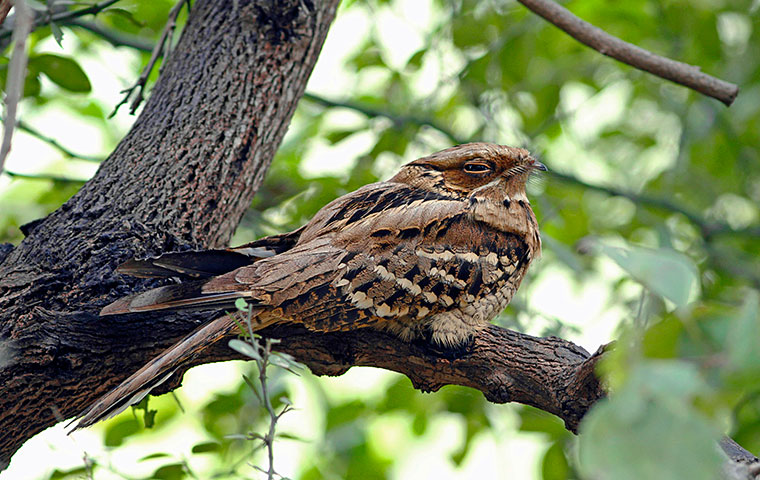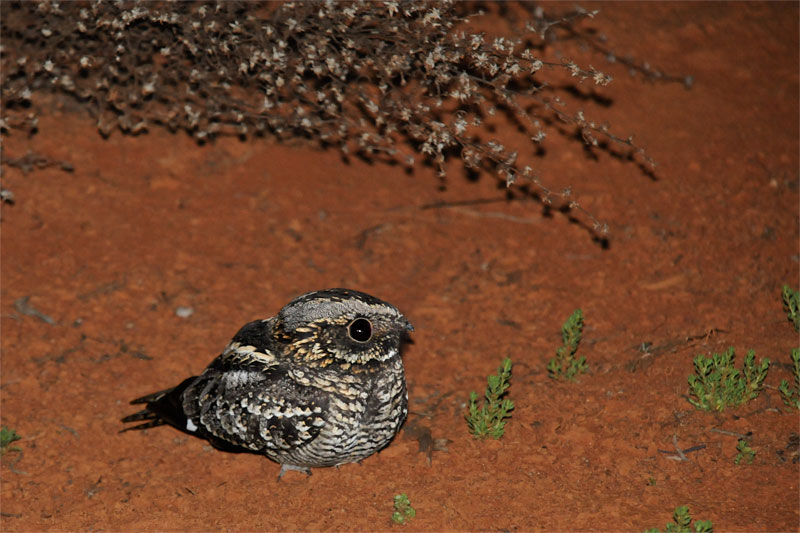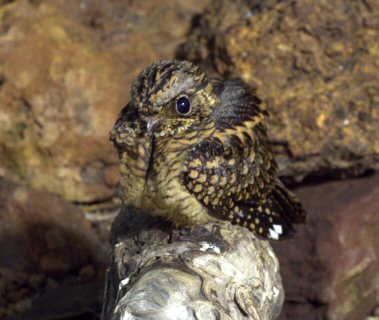
Eurostopodus guttatus
SUBFAMILY
Chordeilinae
TAXONOMY
Eurostopodus guttatus Vigors and Horsfield, 1826, New South
Wales. Monotypic.
OTHER COMMON NAMES
English: Spotted eared-nightjar; French: Engoulevent argus;
German: Argusnachtschwalbe; Spanish: Chotacabras Argos.
PHYSICAL CHARACTERISTICS
11.5–13.2 in (29–33 cm); 2.8–3.7 oz (80–104 g). Grayish
brown, grayish white, tawny, and buff cryptic coloration. Sexes
are similar.
DISTRIBUTION
Breeds over much of Australia west of the Great Dividing
Range; winters mainly in north of breeding range, but migratory
stragglers recorded from islands north of Australia.
HABITAT
Open woodlands, grasslands.
BEHAVIOR
Roosts on ground during daytime; active from dusk until before
dawn. Musical song advertises territories. Song commences
with two to five up-slurred units then concludes with
eight to 15 higher-pitched clinking double units, all on the
same pitch.
FEEDING ECOLOGY AND DIET
Feeds on insects, mainly caught in sustained hawking flight
over the territory after dusk and before dawn.
REPRODUCTIVE BIOLOGY
Nest is an unlined scrape in ground with clutch of single egg.
The egg is greenish with dark spots. Small young have reddish
brown down. Incubation apparently by both sexes, period unknown.
Young can flutter short distances after 18–20 days.
CONSERVATION STATUS
Not threatened.
SIGNIFICANCE TO HUMANS
A retiring nocturnal bird of the Australian outback, unfamiliar
even to most country dwellers except by its nocturnal calls. According
to the superstition of some Australian aboriginals, this
species took away babies during the night.
Other popular Animals
Photo Gallery of - Spotted nightjar




 Animalia Life
Animalia Life